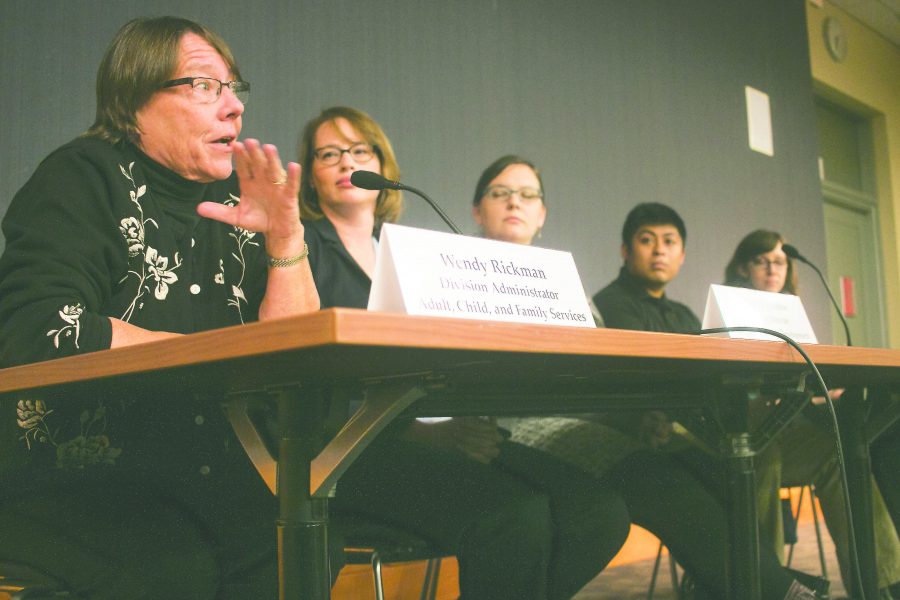According to the July 2016 U.S. Census, 28.2 percent of Iowa City’s 74,398 residents live in poverty.
Iowa City nonprofits, a member from the Iowa Human Services Department, and a member of the Iowa City Neighborhood and Development Services met Tuesday night at the Iowa City Public Library to discuss the issue of poverty in the city and answer questions on how it is being tackled.
One of the first questions asked the panel was about having input from the client population while making decisions. Sarah Benson Witry, the Food Bank and emergency assistance director for the Crisis Center, said it was a topic that the center is working on.
“We’re not doing as good as we could be doing at the Crisis Center,” Witry said, noting that it has been a topic at numerous recent board meetings.
She said that currently, the center tries to engage with its client population through surveys and advertising open board positions.
Tracy Hightshoe, the interim director of the city Neighborhood and Development Services in Iowa City, said there’s more work to do at the city level, and officials have a hard time getting lower-income people to sit in on committees. Despite this, she said, these people without the time to participate still want to be participatory.
“We need to be talking to people, not make them feel like they’re being studied like lab rats,” she said.
Rachel Lehmann, the case manager for Shelter House, asked the audience a hypothetical question to understand the kind of trouble that people in poverty face.
“How many of you, if you had a $400 emergency, have someone in your life you can go to for help,” she said.
RELATED: Poverty on the rise locally
Around a dozen people in the nearly full room raised their hands.
Bouncing off of this, Wendy Rickman, the division administrator for Adult, Child, and Family Services for the Human Services Department, visualized the economic struggles she saw clients face.
“From my perspective, there are a bunch of people swimming uphill,” she said. The majority of her clients are working at least one job, she said, and even with their jobs, they qualify for benefits.
Human Services can provide programs such as food assistance and childcare assistance for those who qualify.
Hightshoe addressed what she called misconceptions about subsidized housing, which is housing subsidized to be more affordable for those in need.
“About 60 percent of the people on these vouchers are elderly and disabled,” she said. “If they aren’t elderly or disabled, they’re working. And we need these people like cashiers and retail clerks.”
The panel also touched on the stigma of increased crime that comes with new affordable housing, addressing the discomfort people have with new affordable housing building projects.
“Subsidized houses do not cause crime,” Hightshoe said. “We see a lot of subsidized housing and we don’t see crime.”
She said there’s a lot of evidence if you put someone, like a child, in permanent housing before age 13, they are less likely to commit crimes, need less special-education services, and have a higher income throughout their lifetimes.
“There’s not one kid I’ve met that hasn’t had a fire that we can either nurture or put out,” Rickman said.



